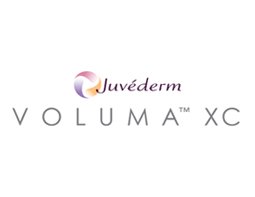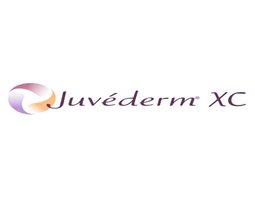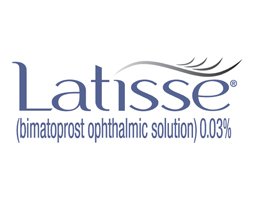Hand Surgery
Carpal Tunnel Syndrome
The gold standard for definitive treatment of this debilitating condition is surgical. Ultimately, there are two surgical options to treat carpel tunnel syndrome: the open technique and the endoscopic technique. The endoscopic technique consistently allows less pain and quicker recovery than the open technique. One of a limited number of physicians in Connecticut specializing in hand surgery, Dr. Arons is the surgeon with the most experience in the New Haven area with the use of the endoscopic technique and has probably performed more endoscopic carpal tunnel releases than any other local surgeon.
Carpal tunnel syndrome often results in numbness and tingling that can make even simple tasks hard to accomplish. Many patients describe a feeling of coldness and even of pain that may radiate up the arm, even to the shoulder or neck. Classically, symptoms are worse at night and awaken patients from a sound sleep. Patients may have a weakened grip, worsening penmanship and loss of dexterity. Patients may notice numbness and tingling while driving, holding a phone, book, newspaper or a hairbrush. Symptoms tend to become more severe over time.
Wrist Arthroscopy
Although a relatively new technique, Dr. Arons is well versed in wrist arthroscopy, which uses an arthroscope to look inside the wrist joint. The arthroscope is actually a small telescope that is inserted into the joint. Using a fiberoptic light source, the wrist joint is lit up and the images transmitted through a small camera to a television screen that Dr. Arons can see. He can then use the many specialized instruments that have been created in the same size as the arthroscope to perform this procedure. Wrist arthroscopy is a surgical procedure performed in the operating room under general anesthesia on an outpatient basis. Arthroscopy can be used for diagnosis and treatment of common wrist problems, usually those following injury.
Basilar Joint Arthritis of the Thumb
Arthritis is a disease that causes inflammation and stiffness in the joints. It can be the result of many factors, including heredity, biomechanical stress and natural aging. It often affects the joint at the base of the thumb known as the basilar carpometacarpal joint. Arthritis in this location is usually the result of degenerative arthritis, also known as osteoarthritis, as opposed to the more widespread disease known as rheumatoid arthritis. Basilar joint arthritis is most common in women over 40, but anyone can get it. Often, both thumbs are involved. Repeatedly gripping, twisting or turning objects with the thumb and fingers may make the arthritis worse, although it usually does not actually “cause” the arthritis. The most common symptom is pain in the lower part of the thumb.
Trigger Finger
Trigger finger is a type of tendonitis or tenosynovitis around the tendons that flex (bend) your finger. It is a type of inflammation that occurs for unknown reasons. Sometimes various activities and employment may substantially contribute to the development of this condition, although the exact cause is unknown. The middle and ring fingers are most involved, although triggering can occur in all fingers. Symptoms include snapping (known as triggering) or even actual locking of the finger in a flexed position. This often occurs at night or upon awakening in the morning. Often, the patient must manually straighten the finger by using his other hand.
Tennis Elbow
Tennis elbow is a condition of inflammation around the bony knob on the outer side of your elbow. It occurs when the tissue that attaches muscle to bone becomes irritated. The bony prominence is called the lateral epicondyle and, therefore, tennis elbow is also known as lateral epicondylitis. Interestingly, most of our patients are not tennis players. A similar condition of tendonitis occurs on the inner aspect of the elbow and this is known as medial epicondylitis or golfer’s elbow. Again, most of our patients with this condition are not golfers. While playing a racquet sport can cause tennis elbow, so can performing any activity that involves extending your wrist or rotating your forearm.
Ganglion Cyst
A ganglion cyst is a firm fluid-filled lump that can suddenly appear on the front or back of the wrist or at the base of the finger. These cysts grow from normal tissue in the wrist and fingers and range in size. Some may become very large, at which point they are usually painful and patients seek medical attention. Although ganglion cysts are common, they do not spread and they do not become cancerous. They are the most common “tumor” (tumor means swelling) of the hand. They can occur after an injury, but many times it is not known why they grow. Ganglion cysts can change in size and go away on their own.
Dupuytren’s Disease
Dupuytren’s disease used to be known as Viking’s disease since it is most commonly seen in patients of Scandinavian and Northern European decent. Patients tend to be fair-skinned. Sometimes, there is a family history of Dupuytren’s disease. The penis and soles of the feet may also be affected, though this is rare. Dupuytren’s disease is an abnormal thickening of a normal layer of the hand below the skin known as the palmar fascia. Although extensively studied, the exact cause of Dupuytren’s disease is unknown. Sometimes a history of a previous injury, alcohol use and use of certain seizure medications have been implicated.
De Quervain’s Tenosynovitis
De Quervain’s tenosynovitis (or tendonitis) is named after the physician who first described this condition of inflammation of the tendons on the thumb side of the wrist in an anatomic location known as the first dorsal extensor compartment. This compartment contains several tendons that pull out and straighten the thumb. De Quervain’s tendonitis is an inflammation of these tendons. Tendons (cord-like fibers that attach muscle to bone) and synovium (a slick membrane that allows the tendons to glide easily) become irritated, causing pain. While the exact cause of de Quervain’s tendonitis is unknown, certain types of activities and employment may be a substantial contributing factor to the development of this condition.
Cubital Tunnel Syndrome
Cubital tunnel syndrome is a set of symptoms that may occur when the ulnar nerve in the elbow gets pinched. The so-called “funny bone” is actually your ulnar nerve and not a bone at all. The exact cause of compression of the ulnar nerve behind the elbow is unknown, although various activities and employment may be a substantial contributing factor to the development of this condition. Holding the elbow in a bent position repeatedly for long periods of time may be a factor, in addition to leaning on the elbows, sleeping with the arms bent or a direct injury to the area.
Dr. Jeffrey A. Arons, M.D.
245 Amity Road, Suite 107
Woodbridge, CT 06525
Phone: (203) 228-5123
Fax: (866)-528-1594
Business Hours













